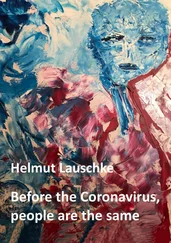For whom?
“For another group that wants to start a war with us,” he says evenly. “Here, let me show you something.”
He rises, but seems to have second thoughts. He takes the rat from the fire, touching the browned meat with his fingers but quickly jerking them back. He soothes his fingers in his mouth.
“Mmmm,” he licks his lips and places the cooked animal on a section of newspaper. For a moment, it looks like fish and chips bought from a London stand, but then my mind sees the headless rat twitch. I flinch.
Now Mac looks at me. “C’mon,” he orders.
We walk farther along the tunnel, away from the direction we had come, and through a small arch into another recess. Mac begins pulling loose bricks from the wall. Inside, on a floor covered loosely by garbage bags, is a small arsenal of guns and ammunition. Some are pistols; others look like the semiautomatics used by street gangs.
Mac pulls me back after I get only a quick look and replaces the bricks.
How many guns are in there? I ask.
“That’s not the point. The point is we’re building our security. Not just Smidge and myself but a whole group of us. This is far more extensive than you’d believe.”
Aren’t you afraid of people up there knowing you have this stuff?
“No,” he says firmly. “We’ll move them when you’re gone in case you try to find them again, which you wouldn’t. Besides, they won’t believe you. They’re not the danger to us. It’s the few other communities down here who are trying to destroy us, take what we’ve got. It’s all a struggle for the future. They want to be the leaders of the future, but we are the ones destined for leadership.”
It sounds like something out of a science fiction movie, maybe Road Warrior , I say, suddenly worried as the words escape me that he might become furious.
He hasn’t seen the film, he says, and then adds with a smile that terrifies me, “You got a lot to learn, Miss, but at least you know where to come when the holocaust begins.”
The air begins to stifle me and I feel I have to leave for fresh air. I silently promise myself I’ll never return to this place, and never be tempted to visit Mac again.
Mac senses my discomfort and quickly begins to guide me up and out. I still can’t see Smidge, I say.
“He doesn’t like questions,” Mac says. “But he must like you. You’re the first outsider he hasn’t thrown bottles and rocks at.”
We climb two levels up, one by a wall ladder, the other along pipes, before he leaves me still one level from the surface. He never goes to the first level, he says apologetically. On the first level, he advises, it’s only about one hundred feet until the exit to the street. I turn back to ask him which direction I should take, but I can no longer see him through the darkness, only the outline of two figures.
“Right or left?” I yell into the darkness, my fright verging on panic. “Right or left?”
“Right,” a voice much deeper than Mac’s says. I think it was Smidge, but I never saw him.
4
The Underground Population
HOMELESS PEOPLE HAVE BEEN CALLED MANY NAMES and described in many ways—unseen men, forgotten men, derelicts, hobos, vagrants, bums, beggars. They have lived in Hoovervilles, shantytowns, boxcars, and sewers. They are a problem in every modern industrialized country today. In Japan, homeless people are called “johatsu,” meaning wandering spirit or one who has lost his identity. “They” are not only men, but also women and their children. And they live not only in the streets where you see them but also under the sidewalks where you don’t.
New York’s underground homeless are only the latest in a long history of people living below the surface of the earth. In ancient times, men were forced to live underground. Slaves of Egypt and Rome lived, worked, and died in their mines. Other peoples have chosen for one reason or another to make their homes underground voluntarily, such as the Cimmerian priests who attended the subterranean oracles of the classical world.
“They [the priests] live in underground dwellings which they call argillae and it is through tunnels that they visit each other back and forth,” Nigel Pennick writes in The Subterranean Kingdom: A Survey of Man-Made Structures Beneath the Earth , quoting Ephorus, who wrote around 500 B.C. Like many monastic orders before and since, the Cimmerians lived in cells cut from rock and emerged only to minister to pilgrims visiting their shrines. They had a rule that they should never see daylight, and so they left their burrows for the surface only at night, returning before the break of dawn. “Pits with vertical entrances were once a popular form of dwelling,” Pennick writes. “The indigenous inhabitants of the Crimea lived in them.”
During the Tatar invasions in the Middle Ages, Crimean peoples hid in these old holes. Early Armenians lived in well-like homes, too, as did the people of prehistoric Britain. A series of cylindrical pits near Highfield, one mile south of Salisbury, England were found on a high chalk ridge. More than 100 such pits have been studied. They vary in depth from seven to fifteen feet, with widths from six to twelve feet. Some experts date them to the Neolithic period; others put them in the Bronze Age. They were probably used mainly in the winter, according to archeologists. Similar structures for winter use are still found today in remote parts of the Himalayas.
In more modern times, subterranean houses were built in Scotland and Ireland, the Souterrains of France, and the Erdstalle of Germany. In some cases the underground dwellings were inhabited by poverty-stricken workers of the nineteenth and even early twentieth centuries. They were often viewed as subhuman. “Modern Troglodytes” was the title of an article by Robert Garner in The Reliquary in 1865 about his discovery that “whole communities live in subterranean villages, and in our own times, and in mid-England. The New Red Sandstone is particularly tempting for the formation of such dwellings, and was thereto excavated very largely in former times, for instance in Sneinton, and on the Lene in Notts, Nottinghamshire. Also the lime debris near Buxton has been burrowed for the same object,” he writes.
The largest remaining village at the time, Garner found, was at Dunsley Rock, known locally as Gibraltar, where seventeen separate underground dwellings housed forty-two people. Other nearby cells cut out of the rock were used as byres or styes for animals.
He reports asking one “troglodyte woman” how many people lived in one cavelike dwelling. “Nine of we,” she replied, with rent three shillings a week. In a pretentious aside, Garner wrote, “We were satisfied with what we had seen of the troglodytes without feeling any strong desire to become a member or any class of them ourselves.”
Probably the last underground village in England were the “lime houses” at Buxton in Derbyshire. Lime workers, who were paid pittances and treated much like slaves, burrowed their homes into the spoil heaps from the lime-burning industry. French geologist Faugas de Sant-Fond left this account of a 1784 visit to Buxton: “I looked in vain for the habitations of so many laborers and their numerous families without being able to see so much as one cottage, when at length I discerned that the whole tribe, like so many moles, had formed their residences underground…. Not one of them lived in a house.”
“Wretched and disgusting are these caves in the extreme,” according to an unnamed correspondent Pennick quotes in The Subterranean Kingdom . “And but for having their entrances closed by a door, [they] might be more easily taken for the dens of wolves or bears than the abodes of humanized beings.”
Читать дальше












